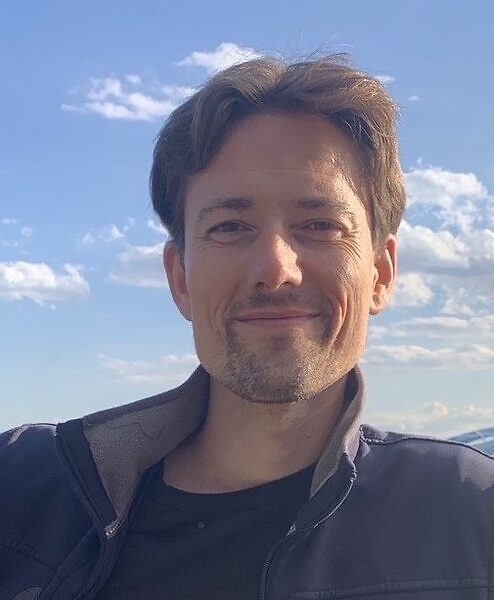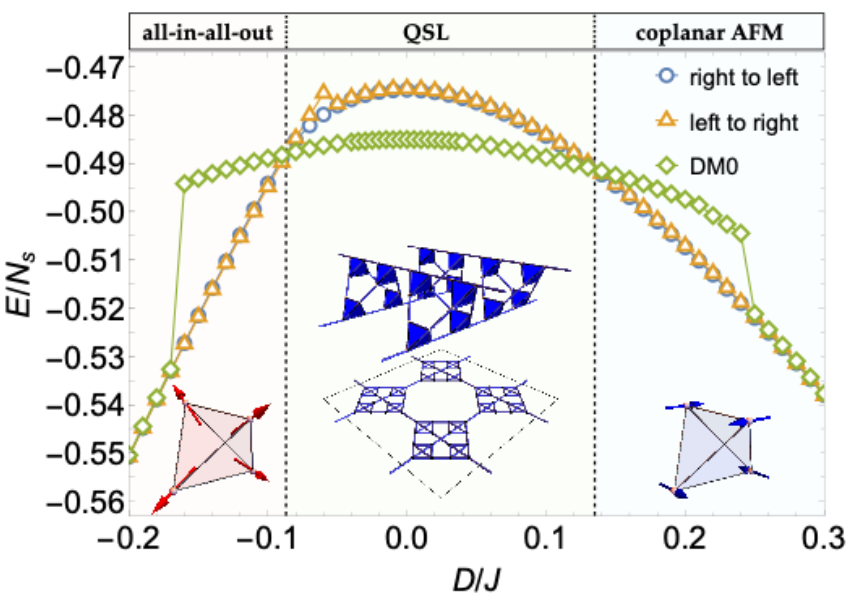[Seminar] Prof. Rico Pohle "Ground state of the S=1/2 pyrochlore Heisenberg antiferromagnet: A quantum spin liquid emergent from dimensional reduction"

Date
Location
Description
Speaker
Prof. Rico Pohle / Keio University
Title
Ground state of the S=1/2 pyrochlore Heisenberg antiferromagnet: A quantum spin liquid emergent from dimensional reduction
Abstract
The quest for quantum spin liquids (QSLs) has posed challenges to both experimental and theoretical
disciplines for approximately 50 years since their conceptual proposal on the triangular lattice [1].
Two-dimensional frustrated magnets, such as Kitaev, triangular, or kagome materials, have proven
to be excellent platforms for the exploration of QSLs [2]. In three dimensions, the pyrochlore lattice
stands out as a prime example, offering a diverse spectrum of spin liquids, including spin ice, quantum
spin ice, and higher-rank spin liquids [3,4]. These have been comprehensively understood through
classical approaches and their perturbative expansions.
The ground state of the fully quantum S=1/2 Heisenberg antiferromagnet (HAF) on the pyrochlore
lattice has been a subject of intense debate for over three decades, with conflicting arguments
suggesting both the presence and the absence of a QSL ground state. Recent state-of-the-art numerical
investigations propose a symmetry-broken and essentially classical ground state [5]. However, to
achieve a convincing and conclusive understanding, theoretical work must incorporate a
comprehensive finite-size analysis to make reliable estimates in the thermodynamic limit. Without
such an analysis, the nature of the ground state remains an open question.
In this talk, we demonstrate that the ground state of the S=1/2 pyrochlore HAF is indeed a QSL [6].
By employing the state-of-the-art "many-variable variational Monte Carlo" method, we solve the
full quantum many-body Hamiltonian and unveil an emergent dimensional reduction in the ground
state with dominant algebraic correlations in a confined 2D subspace. By examining an effective
2D lattice model, we validate the algebraic decay of spin and singlet correlations in large system
sizes and observe a vanishing excitation gap in the thermodynamic limit. The wave-function
structure supports the fractionalization of spins into spinons. Importantly, this QSL proves to be
robust against spin-orbit interactions (see Fig. 1), expanding the possibilities of realizing QSLs in
real materials such as iridium pyrochlore oxides.
[1] P. Anderson, Mater. Res. Bull 8, 153 (1973).
[2] L. Balents, Nature 464, 199 (2010).
[3] J. G. Rau and M. J. Gingras, Annu. Rev. Condens. Matter Phys. 10, 357 (2019).
[4] H. Yan, et al., PRL 124, 127203 (2020).
[5] I. Hagymási, et al., PRL. 126, 117204 (2021), N. Astrakhantsev, et al., PRX 11, 041021 (2021), R.
Schäfer and B. Placke et al., Phys. Rev. Lett. 131, 096702 (2023).
[6] R. Pohle, Y. Yamaji, M. Imada, arXiv:2311.11561

Fig. 1: Ground-state phase diagram for the S=1/2 pyrochlore HAF in presence of Dzyaloshinskii-
Moriya interactions. The model reveals a QSL ground state, where spin correlations are confined
within a 2D subspace, in an extended parameter region, surrounded by all-in/all-out and coplanar
antiferromagnetic (AFM) ordered phases.
Meeting ID: 928 4799 3223
Passcode: 998375
Subscribe to the OIST Calendar: Right-click to download, then open in your calendar application.



